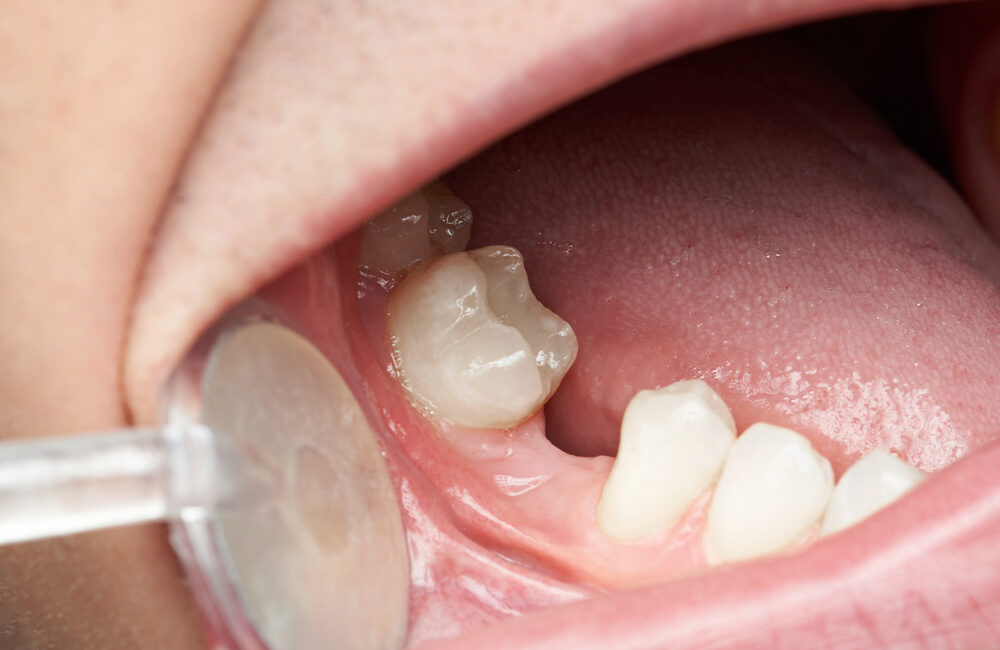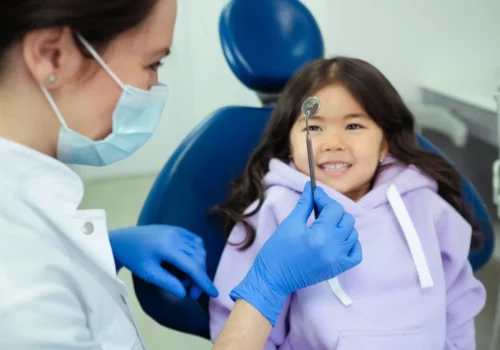
Nobody likes to lose a tooth, but it happens. While pulling a tooth is our last resort, it’s not the end of the world either. You are probably asking yourself: “Now what? Do I have to replace my extracted tooth?”
It is important to fill in the area of the missing tooth. Your surrounding teeth can move, which can change your whole bite, usually for the worse. No matter what, your mouth won’t be in top working order anymore. This can affect chewing, talking, and even your smile. Choosing a viable option to replace missing teeth is critical to maintaining a healthy jawbone.
As your family dentist, our job is to push for the best scenario. None of this is ideal, but we do the best we can.
Here’s what can happen if we do nothing — just leave the space as it is and don’t replace the missing tooth. If you’re missing a tooth, this will put extra strain on the surrounding teeth. Since we chew primarily with our posterior teeth, this will cause those teeth to wear out faster. An extracted bottom tooth, on the other hand, can cause the remaining upper teeth to erupt and come out of the socket, leading to further tooth loss.
There are numerous other ways missing teeth can negatively impact your existing teeth. Fortunately, you have options.
Options for Replacing Missing Teeth
A Dental Implant
A dental implant is your best option to replace missing teeth, but it’s also expensive. We can do dental implants to replace one tooth, or multiple teeth, or to support a complete denture. It’s not the best choice for all patients. As cosmetic dentists, we’ll do a full assessment of your mouth to see if it’s the right choice for you.
Implants are cosmetic teeth that are surgically drilled into your gum line. For all practical purposes, they work like a regular tooth. Because they look and function like your natural tooth, dental implants are the best replacement for missing teeth. Dental implants are also permanent — they’ll last for a lifetime.
A Dental Bridge

A dental bridge involves two teeth on either side of the tooth that is missing. Both teeth are molded to make an impression, which is then sent to a lab to create an artificial tooth ideally designed for the space. The teeth need to be cut down to make room for the bridge. The new tooth is cemented into place, and connected to the two natural teeth, effectively creating a bridge.
A Denture or Partial Denture
This is a removable appliance — essentially fake teeth that you take out every night. It’s the most cost-effective option for tooth replacement. We’ll need to do follow-up appointments to make sure we’ve got the right fit.
Keep in mind that dental care is still important even if you have dentures. The dentures will need to be cleaned every night and brushed with a special denture brush. Sometimes dentures can crack or chip and will need repair.
If you should need to have a tooth extracted, remember that life goes on. We have plenty of alternatives to help you regain a healthy smile. You can still eat normally and have a beautiful smile with the right follow-up dental care. Let’s find you a viable solution for tooth replacement — one that works for both your budget and peace of mind.
For a variety of reasons, you may have had a tooth extracted or are missing a tooth. Some people may not see the importance of replacing the tooth or may not see the value in spending more time and money on an artificial replacement. However, for your dental health and to preserve the functionality of your teeth and jaw, it is vital to replace a missing or extracted tooth.
Aesthetic Appearance
Replacing missing teeth is an important part of restoring your confidence in your smile, and it is also key to maintaining dental health and a fully functioning bite. If your missing tooth is in the front, it will affect your confidence while talking and smiling. Besides the appearance aspect, when a gap is left by a missing tooth, surrounding teeth have a tendency to shift because that tooth is no longer helping to keep everything in line. Ultimately, teeth may become crooked or new gaps may appear between teeth.
Issues with Bite and Alignment
Missing teeth also cause problems with biting and chewing your food. When one or more teeth are missing, more stress is placed on the remaining teeth and you may not be able to chew properly. There can also be a shift in the alignment of the teeth resulting in a type of malocclusion.
Risk of Bone Loss
Besides the possibility of having a mouth of overgrown or crooked teeth, you are also at risk of bone resorption or bone loss. Without teeth to support that area of your mouth, your gums and jawbone begin to deteriorate as there is no stimuli. The bone loss will also cause your cheeks and lips to look sunken in, instantly aging you.
Related / Day-by-Day Expectations After a Tooth Extraction (Timeline).














